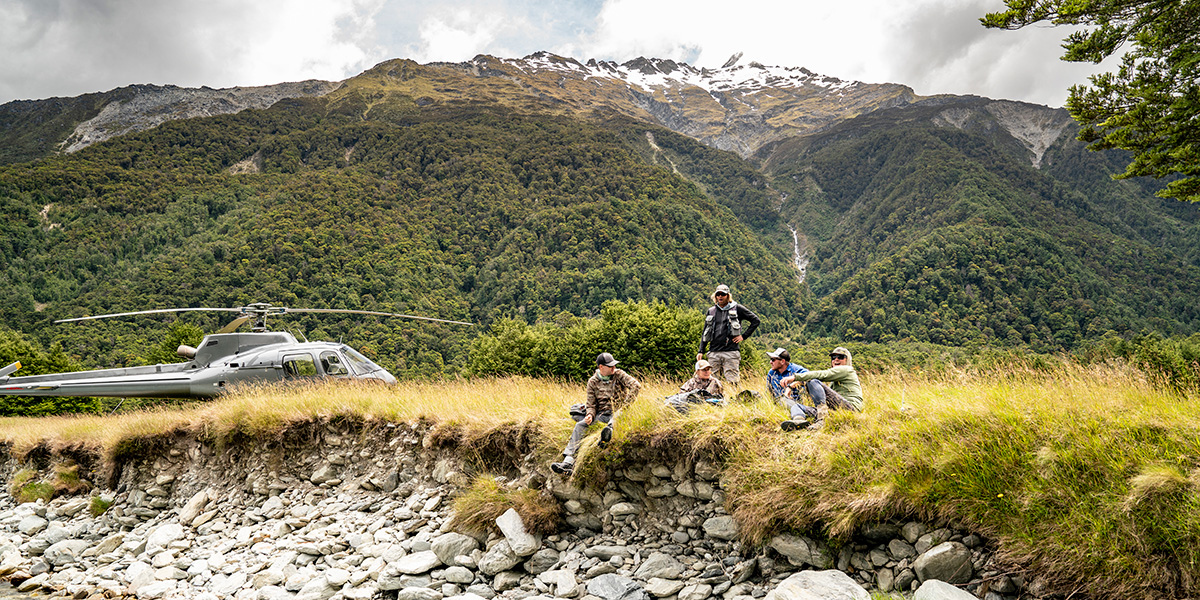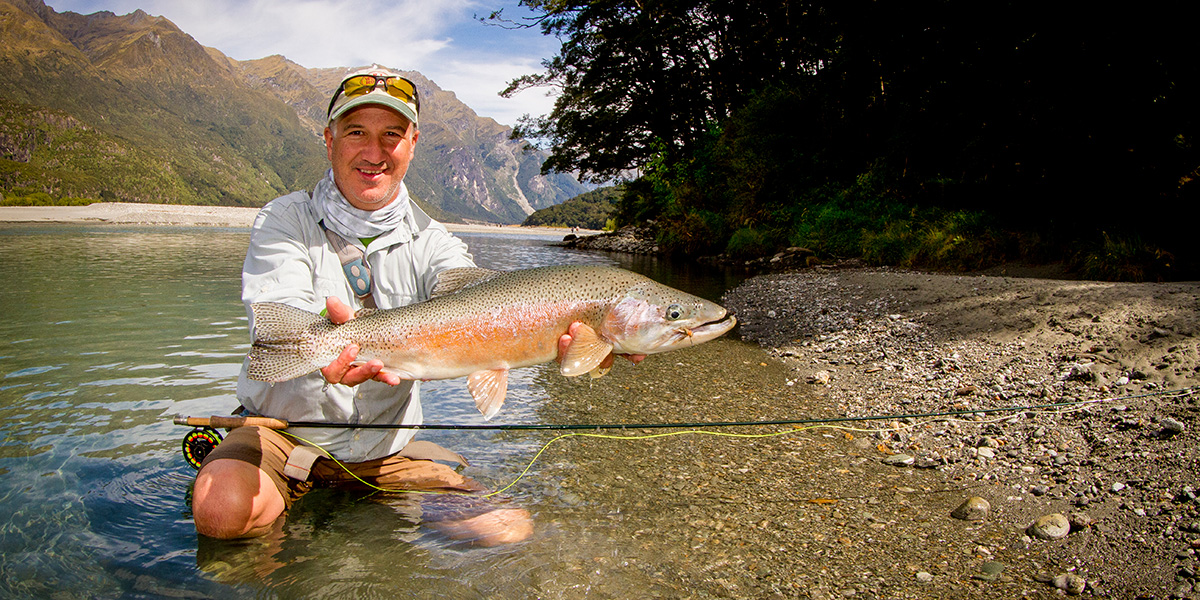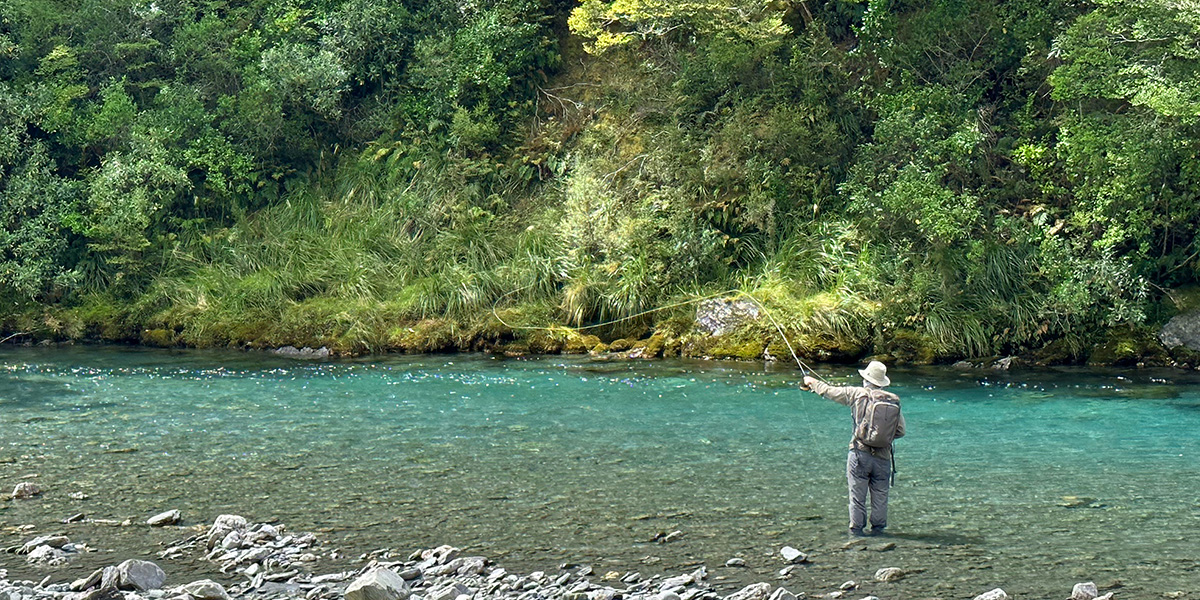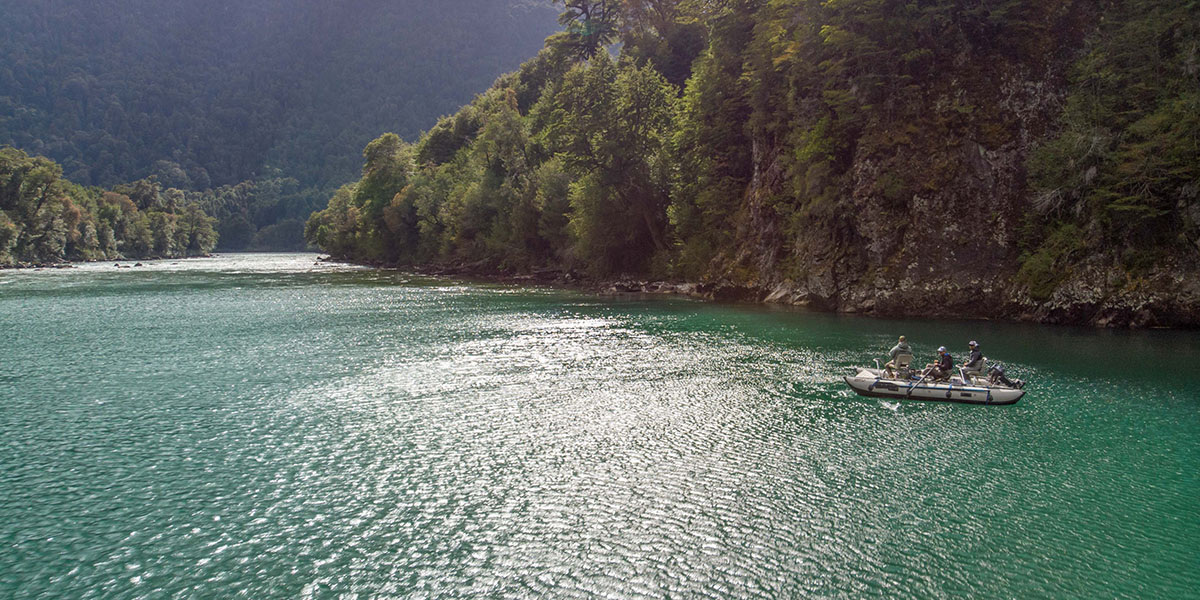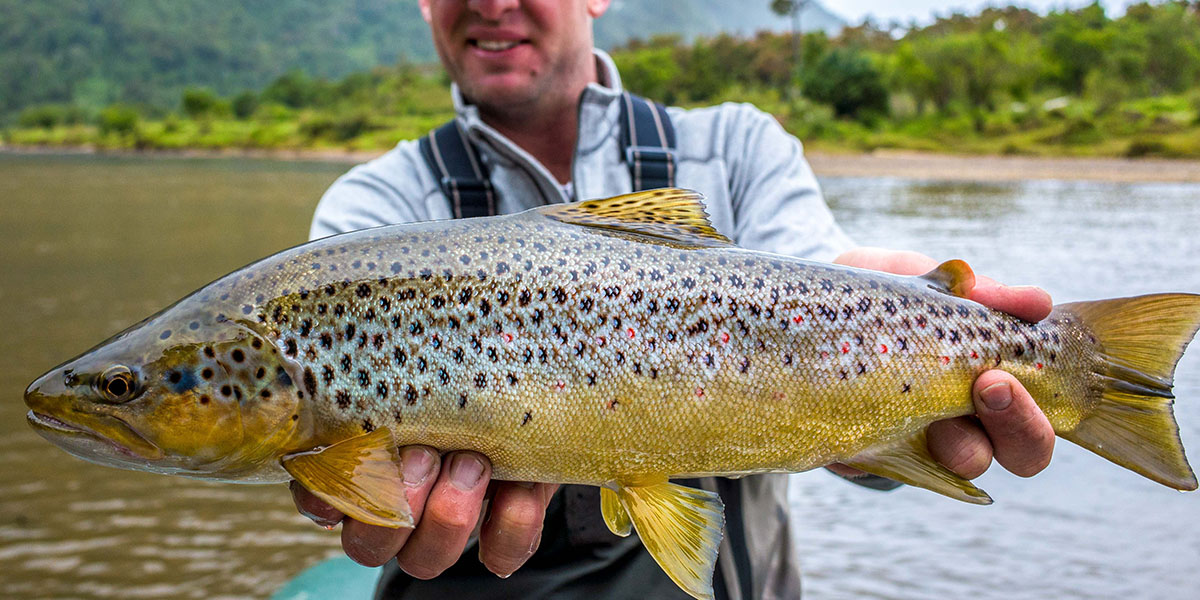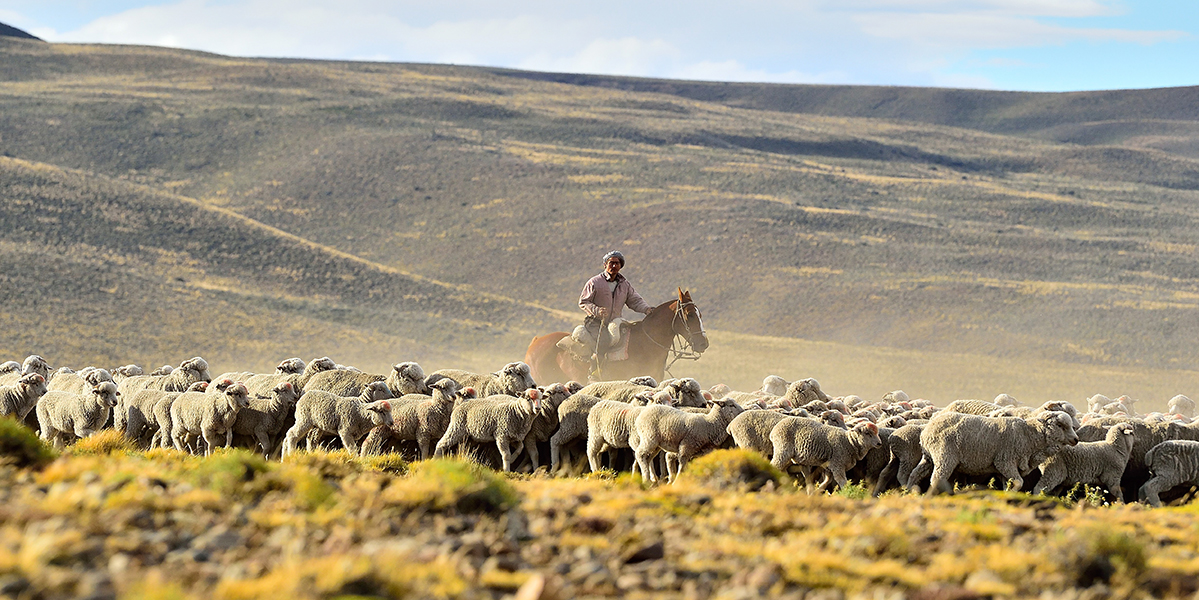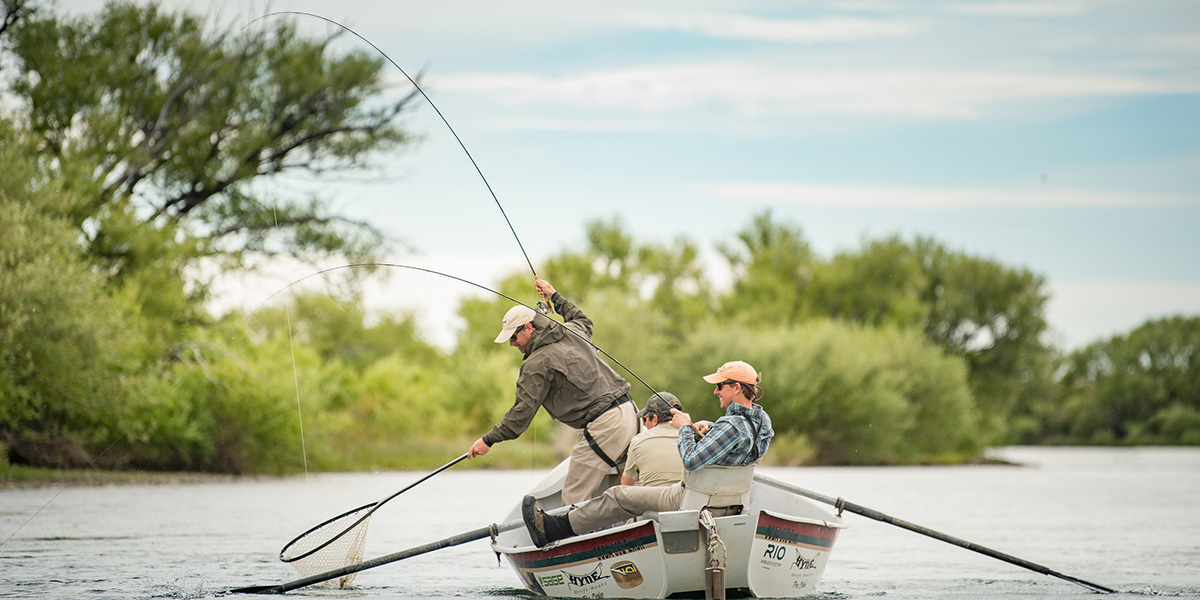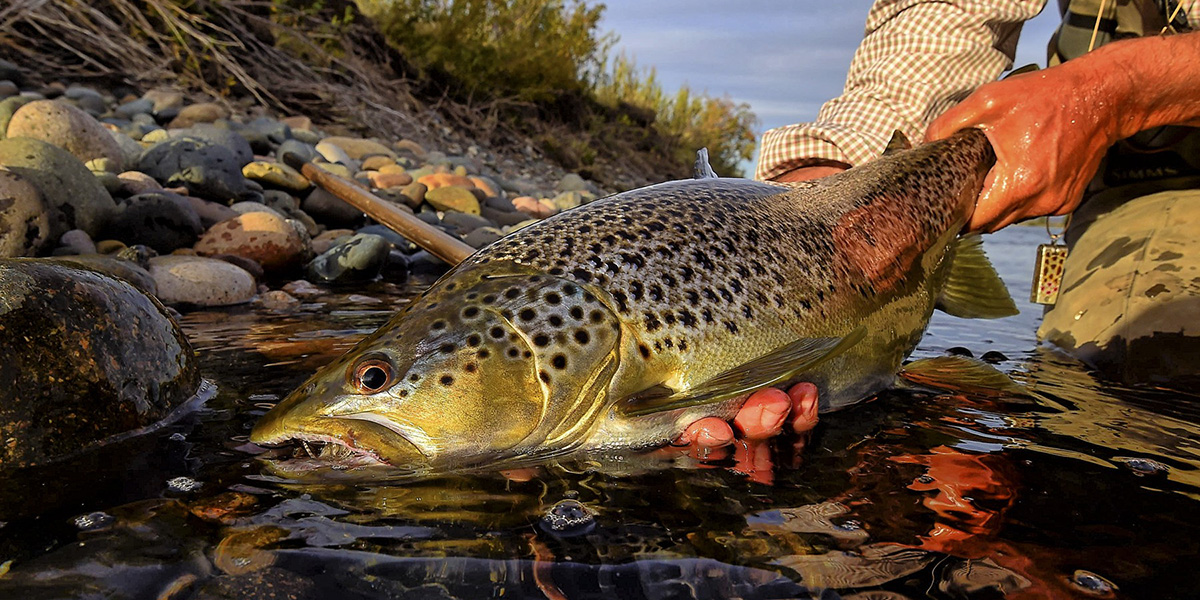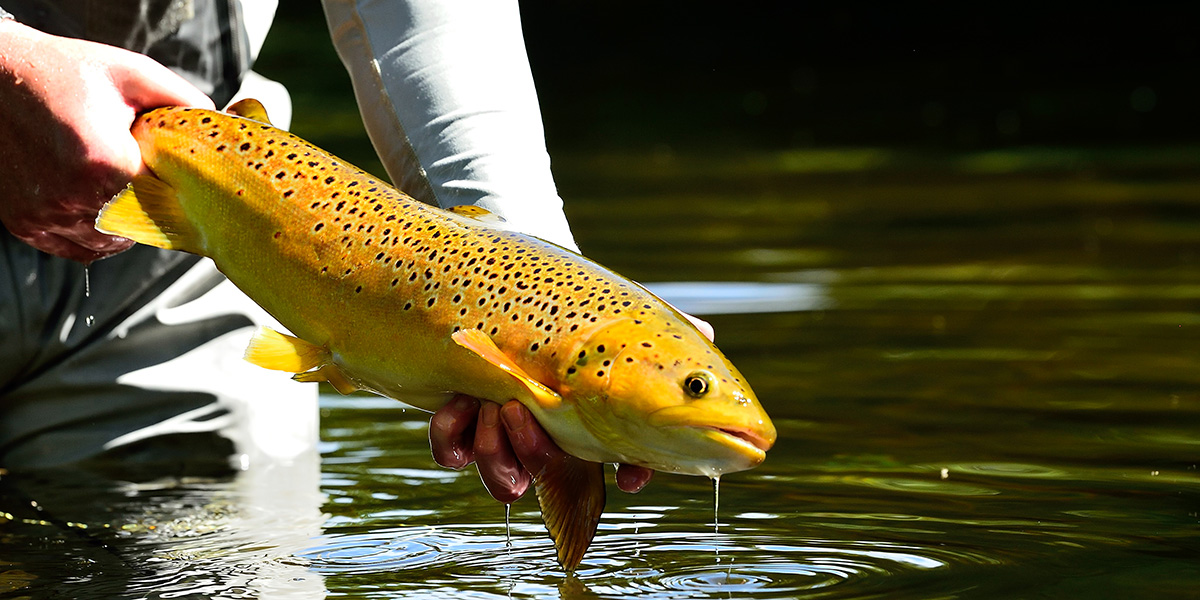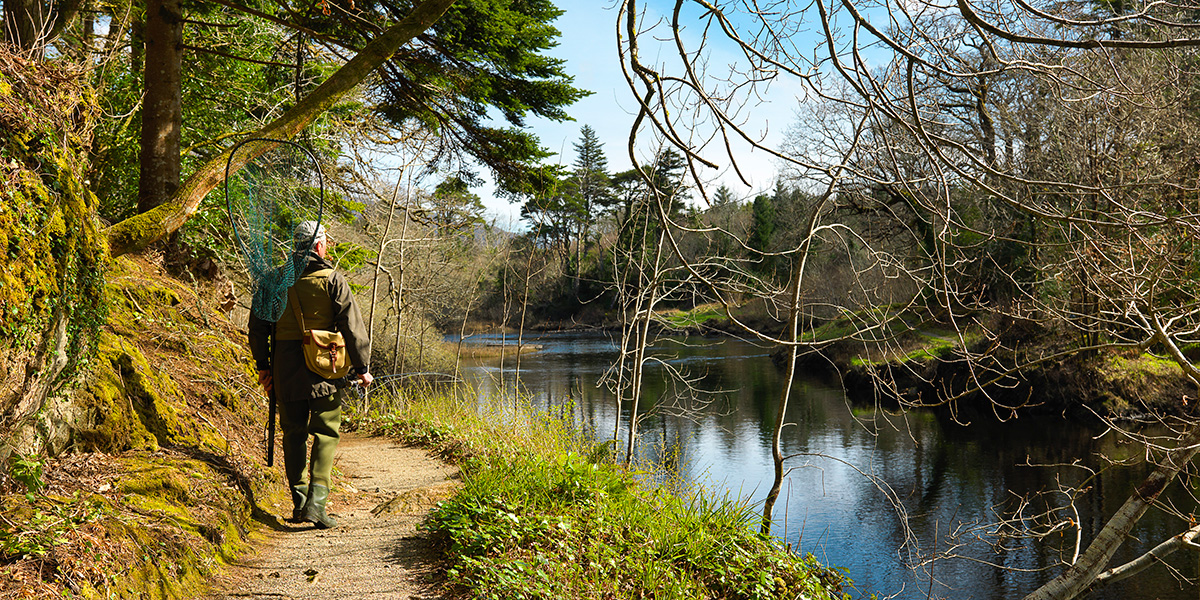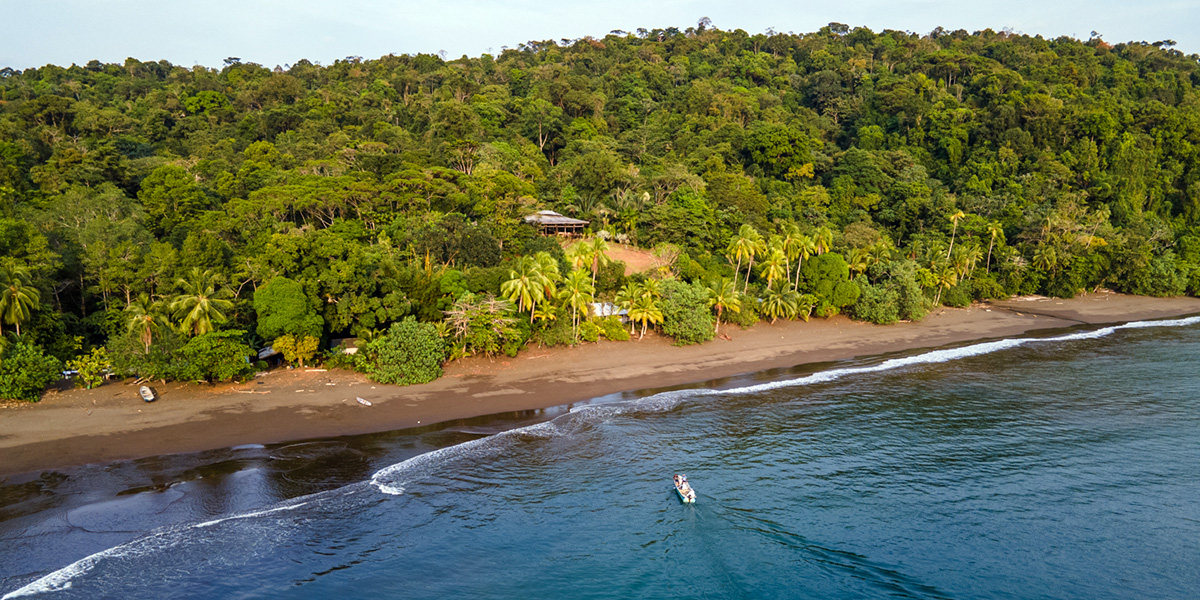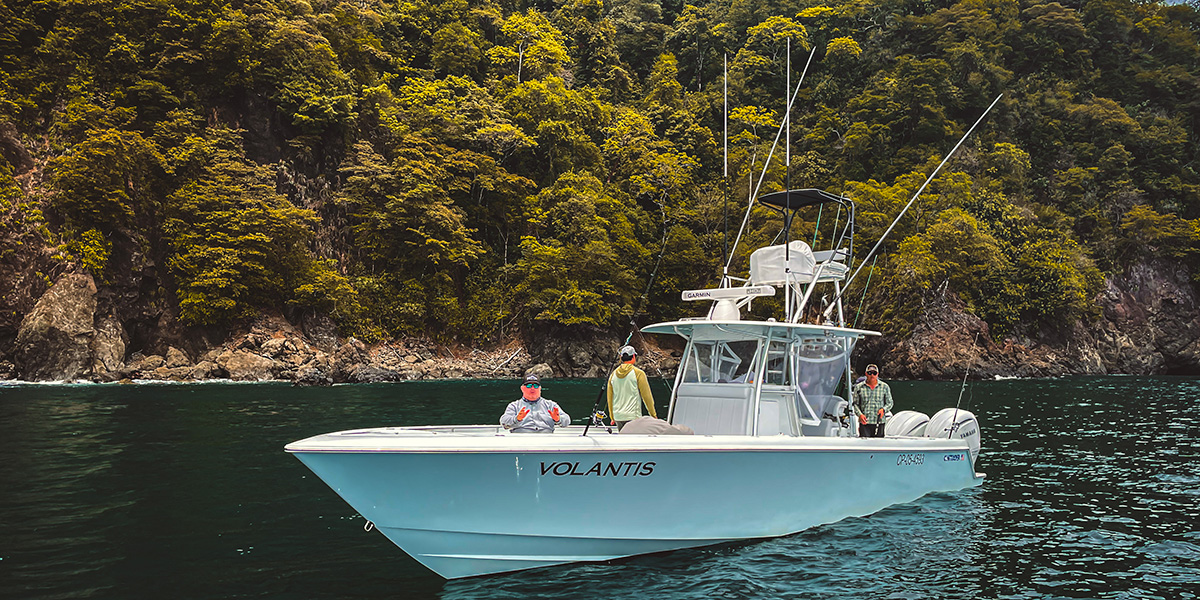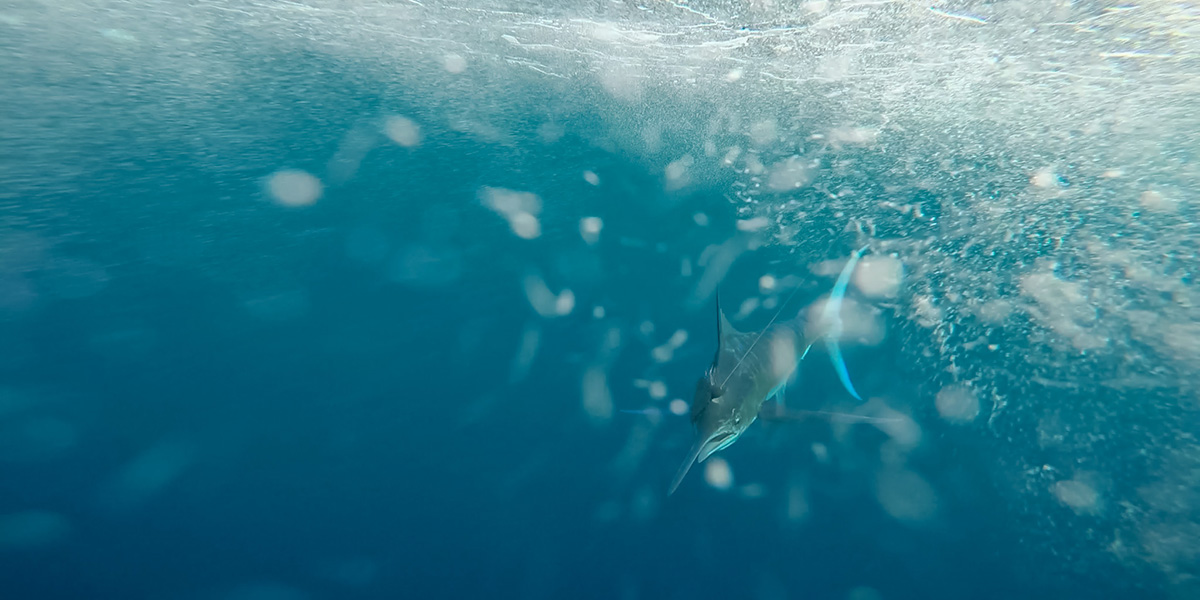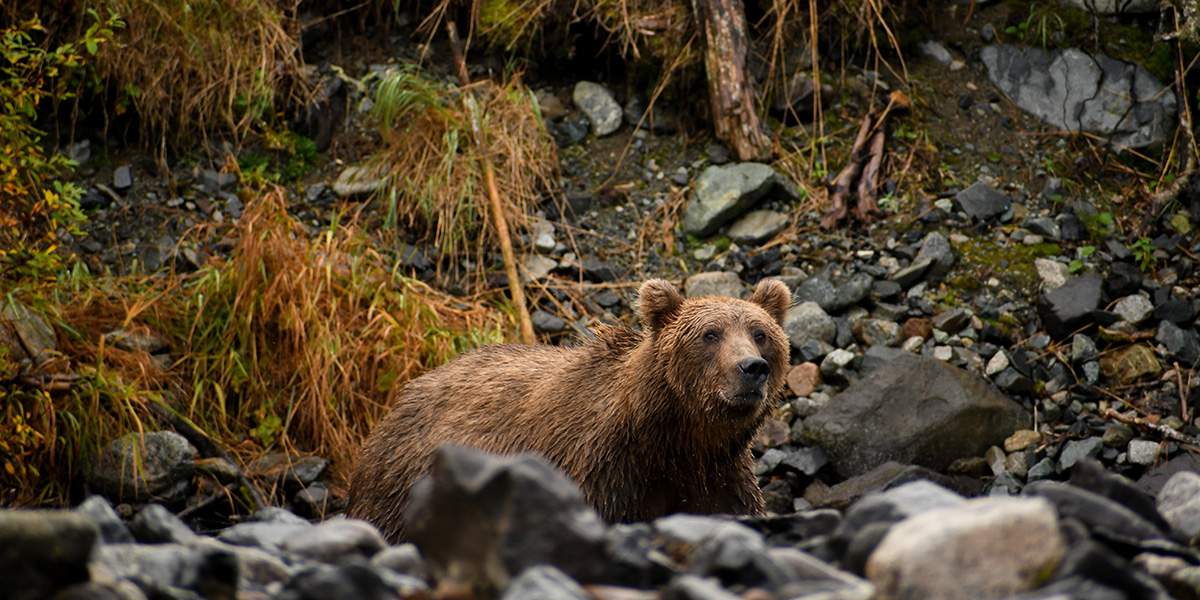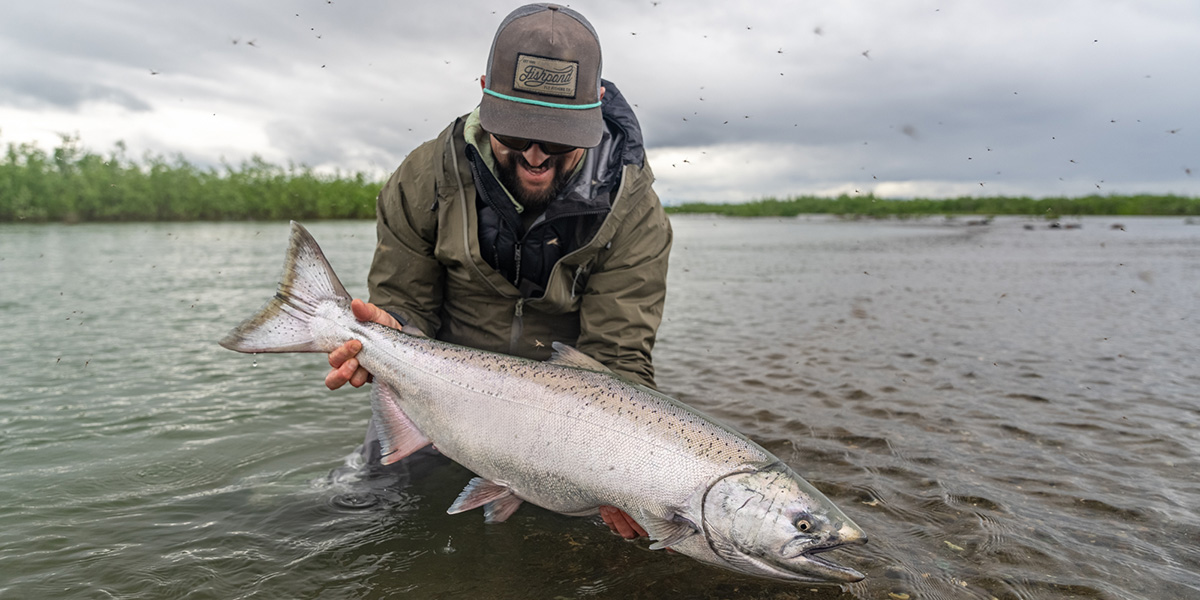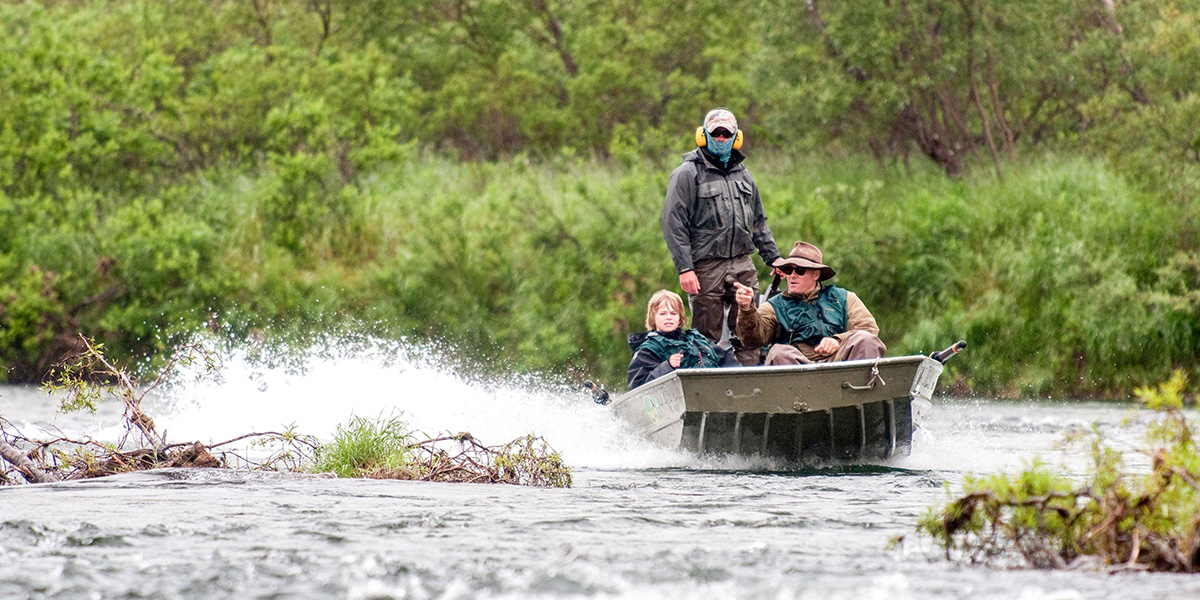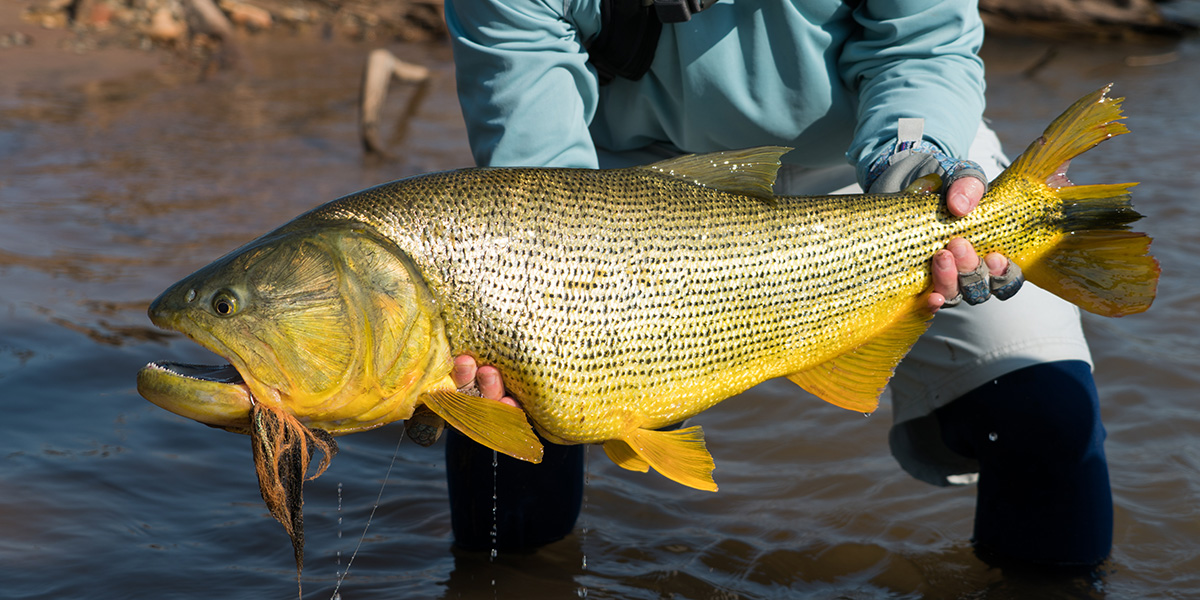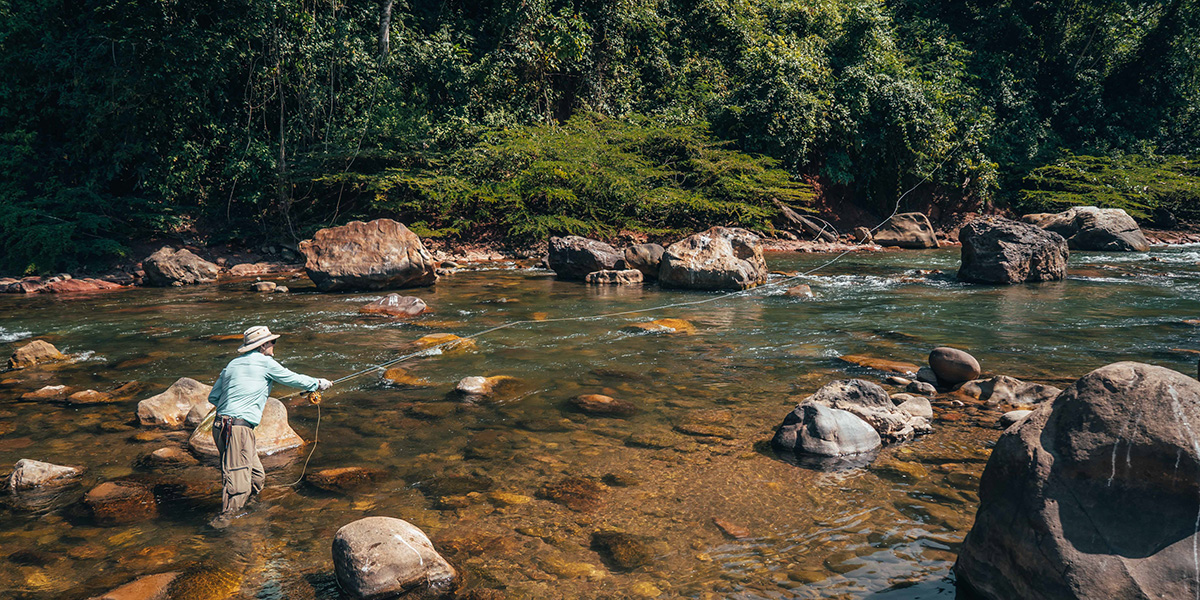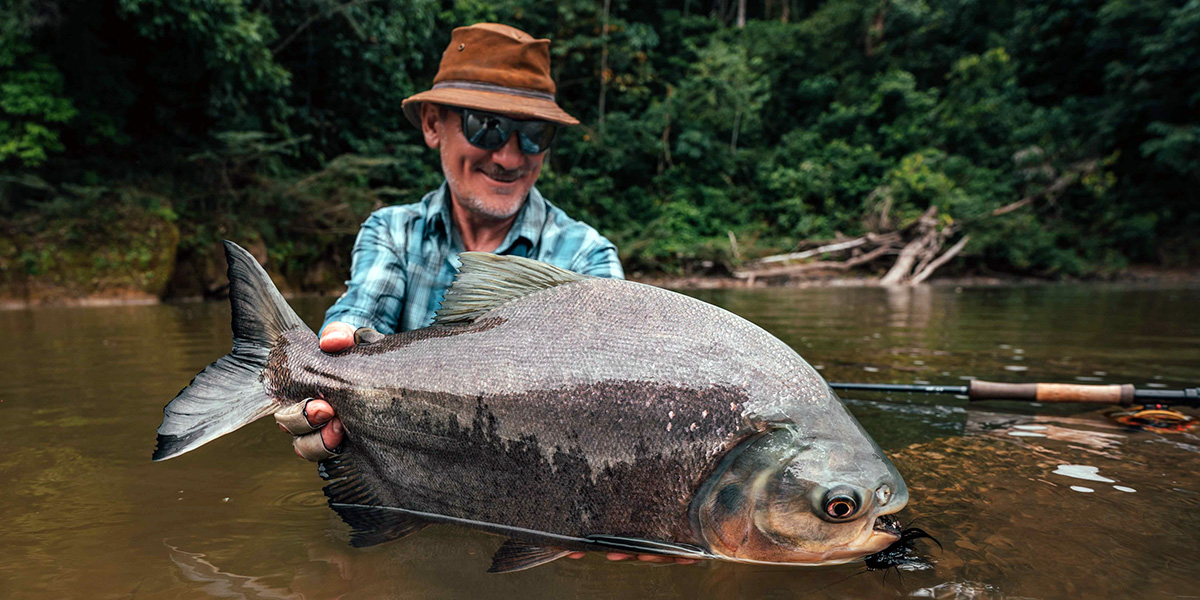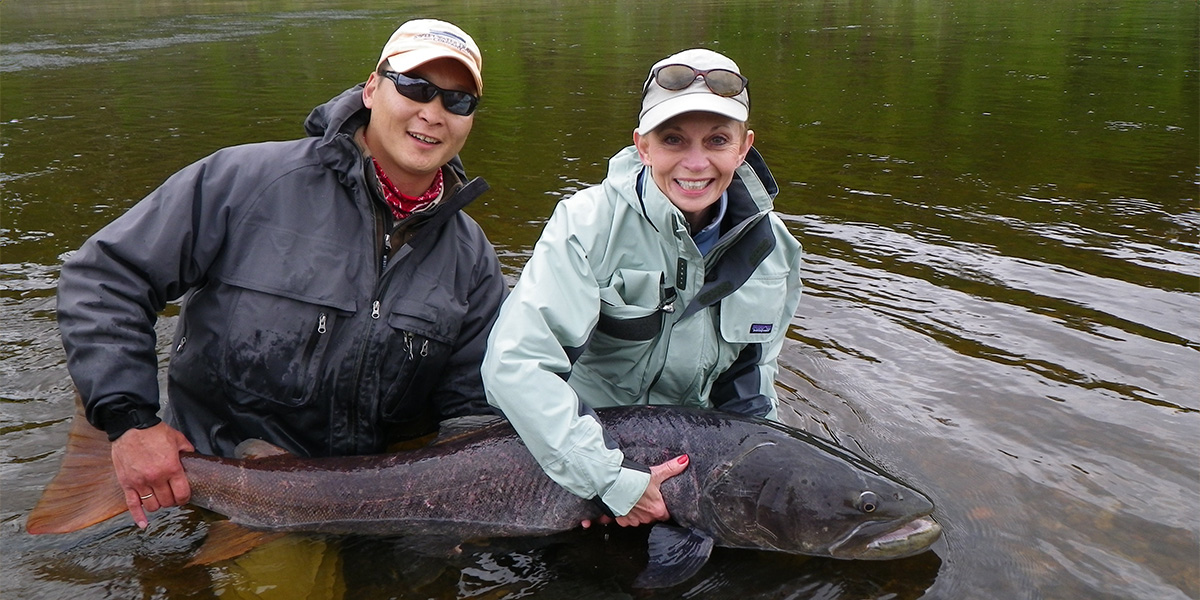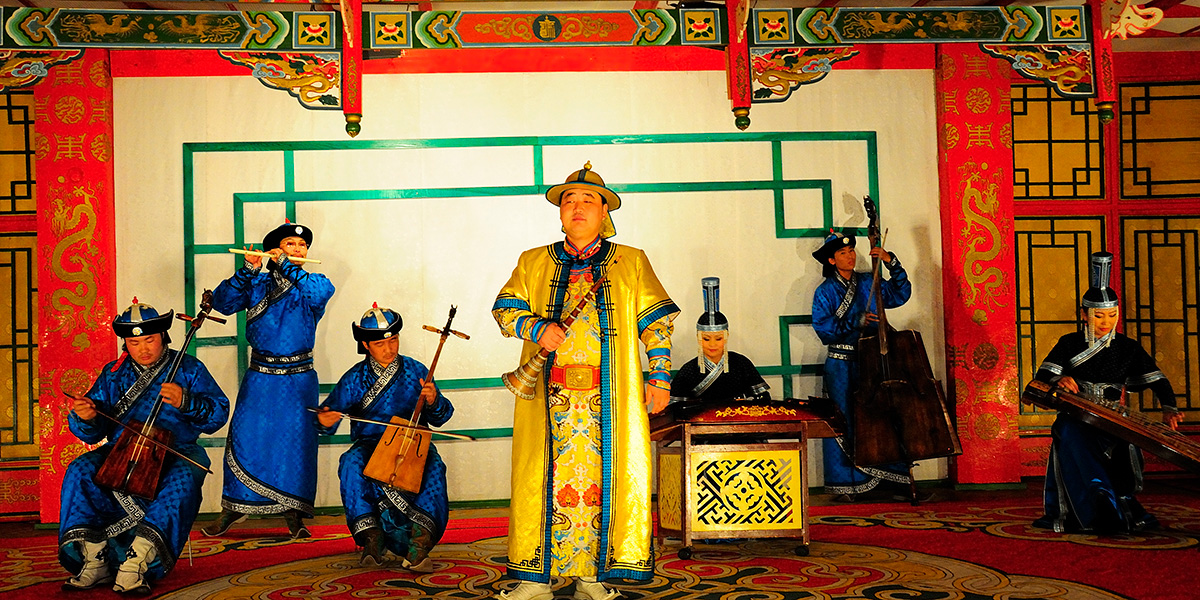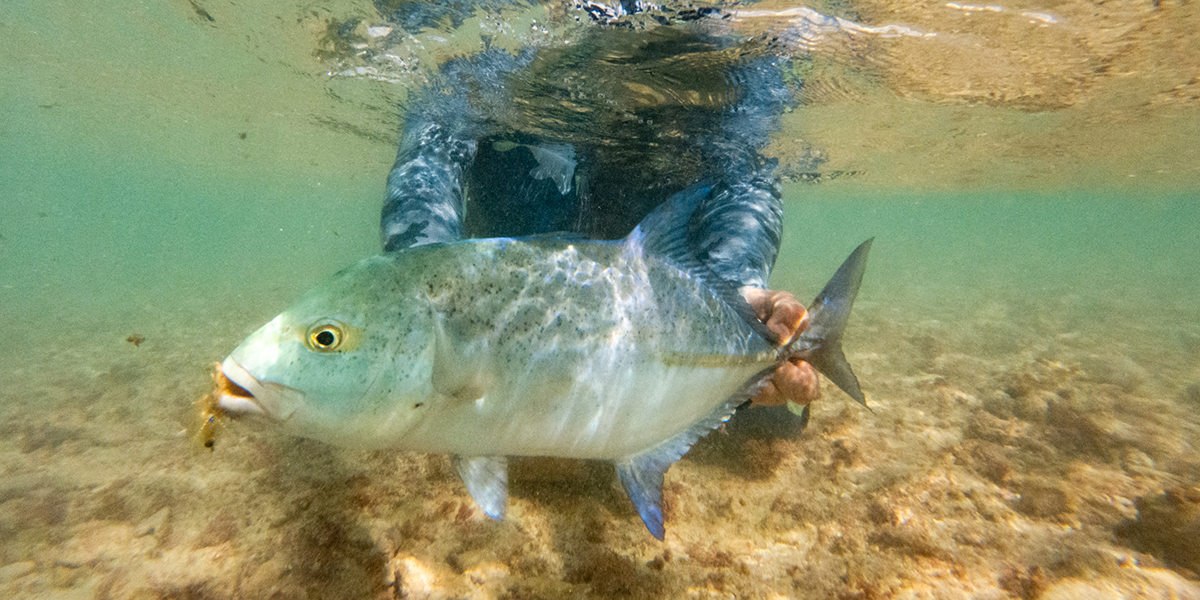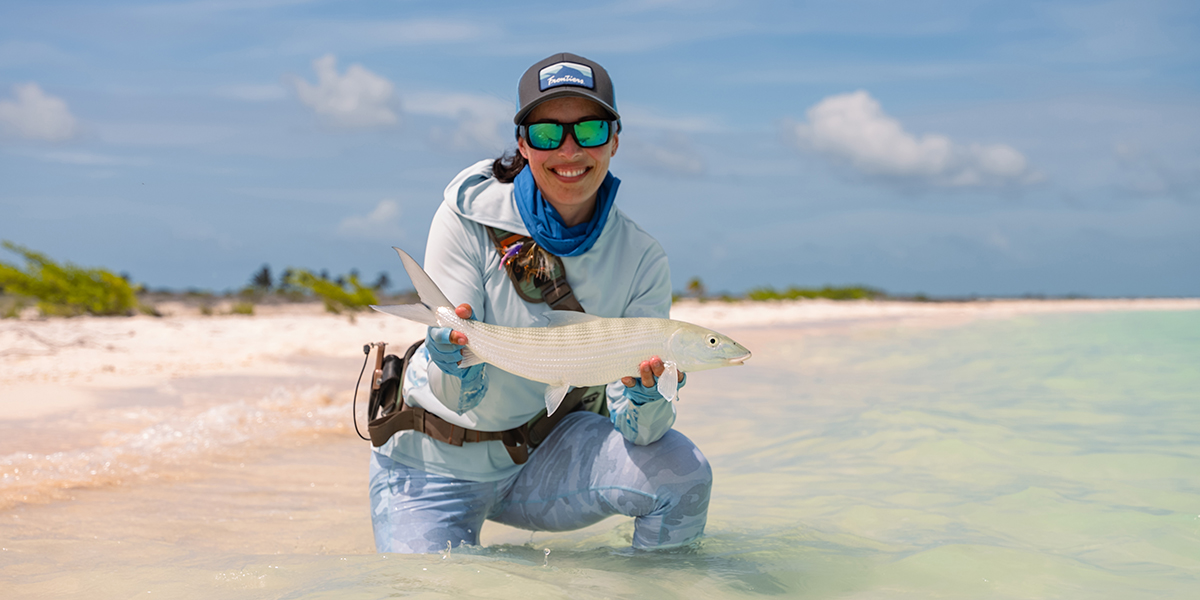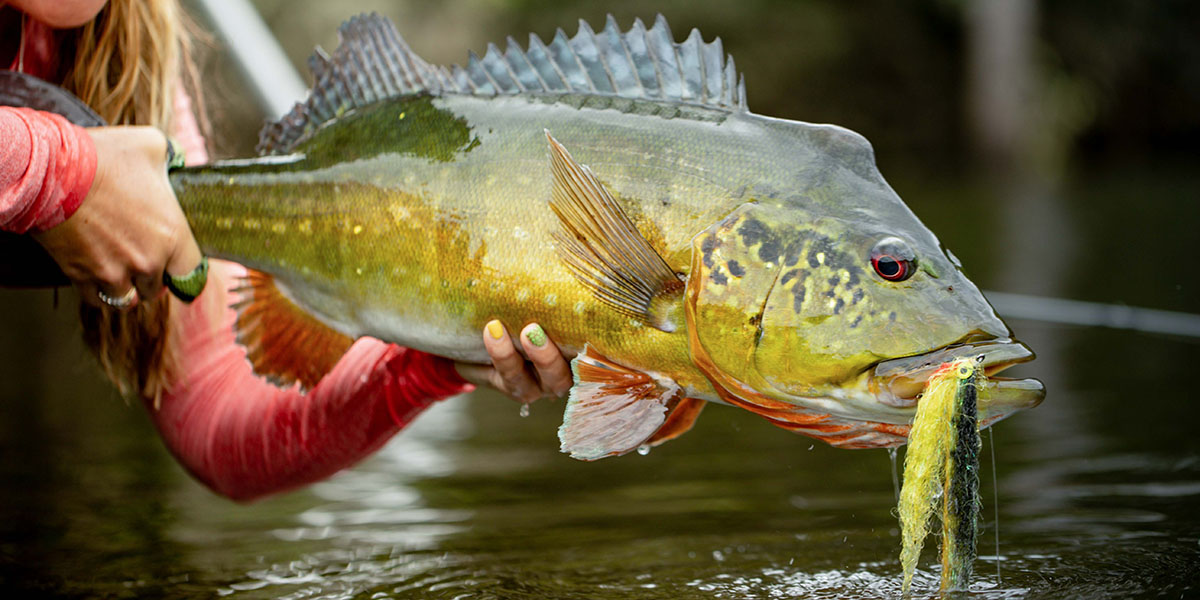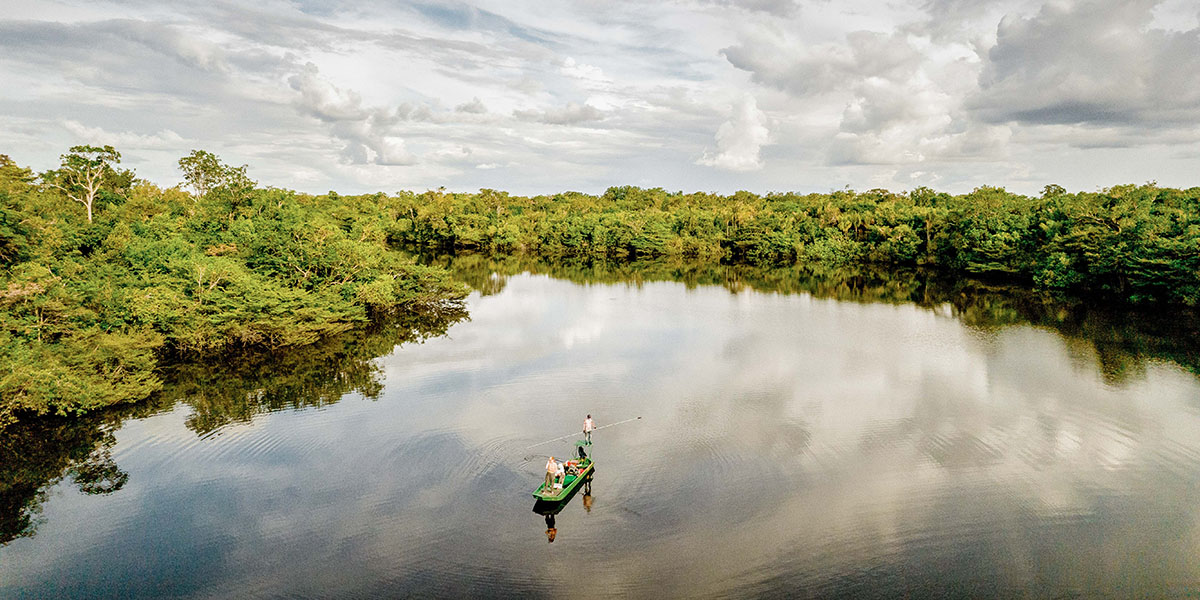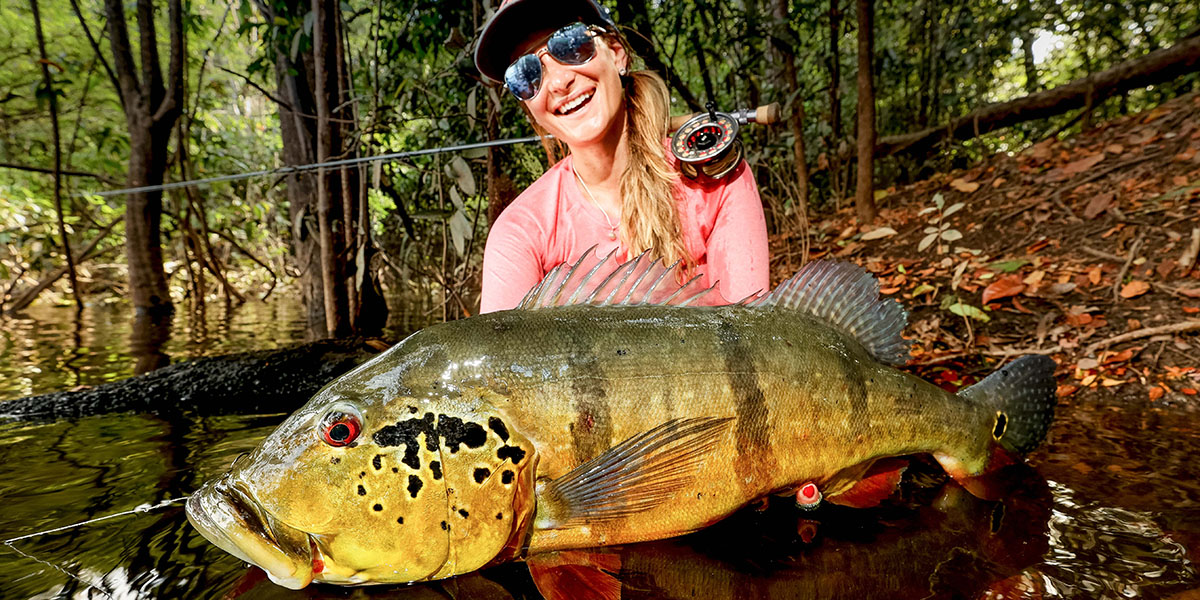Remote Fishing Trips by Month: Off-the-Grid Angling Spots
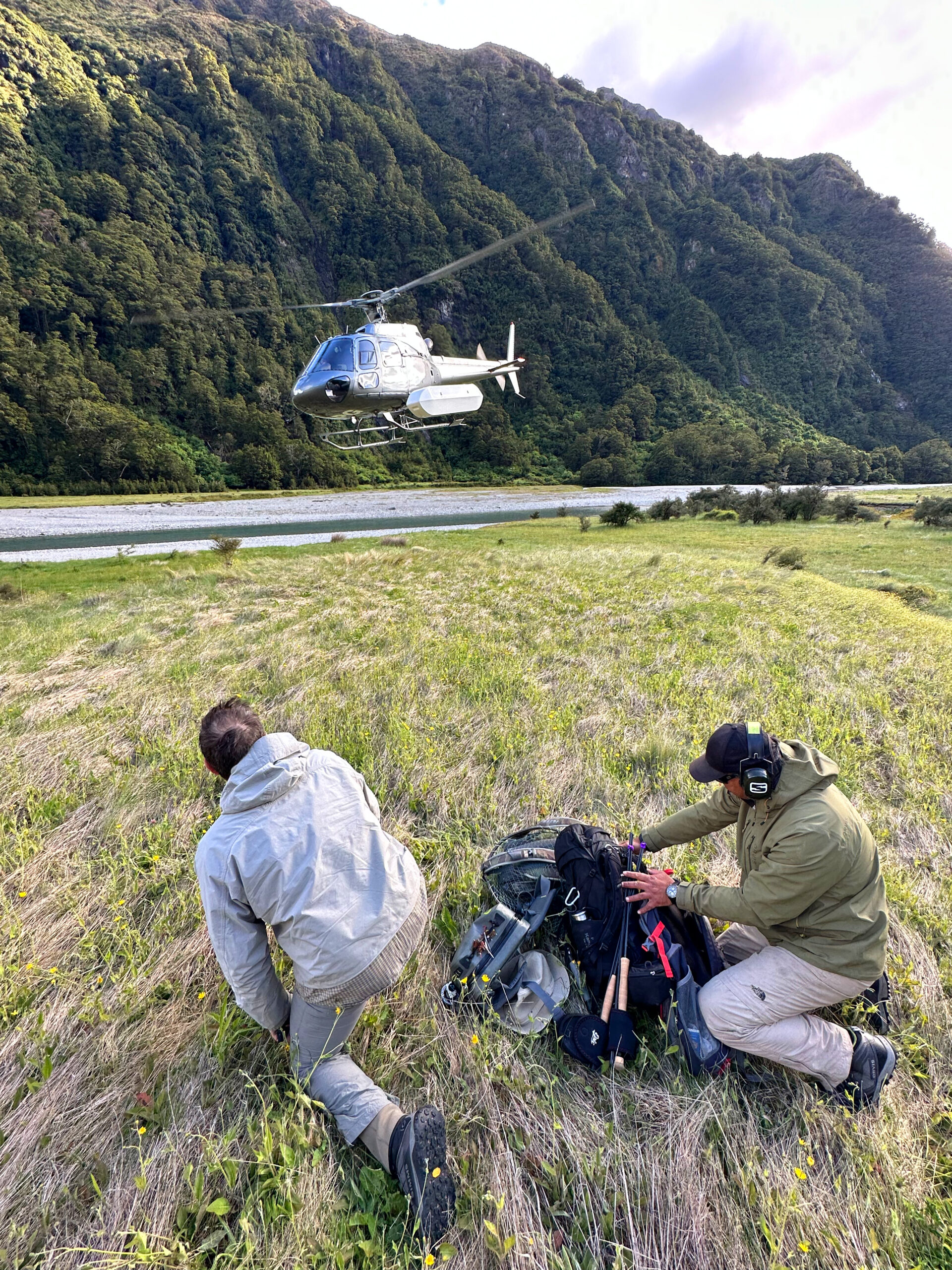
Do you find yourself looking for a bit more unique, obscure even, fishing and travel ideas? Perhaps you buy into Michael Easter’s Comfort Crisis, seeing the value in challenging endeavors. Or maybe you find joy in the adventure of breaking trail and taking the road less traveled. For others, the solitude of getting away from the crowds brings a level of authenticity and peace that can transcend words. Maybe what drives you is less philosophical and more about epic experiences that seemingly only occur in remote locations, like sight-fishing for trophy golden dorado deep in the jungles of Bolivia. If any of these mindsets resonate with you as an angler, traveler, and adventurer, we’ve curated a year’s worth of remote fly fishing trip ideas to deliver unforgettable backcountry experiences. From taimen in Mongolia to heli-fishing in New Zealand, these destinations go beyond the usual to offer total immersion. Think wilderness float trips, remote flats, jungle rivers, and wild trout streams with no one else around. These off-the-grid fishing adventures are for those who want to disconnect—and catch fish in the most remote places on Earth. Regardless of the fishing outcomes, you will no doubt come away with a memorable story.
Are these destinations or style of travel not for you? Check out some of our other articles to learn how you can fish all year:
- Easy to Reach Fly Fishing Destinations
- Best Places to Catch Trout Each Month for Traveling Anglers
- Travel Destinations that are Great for New Fly Fishers
- Fishing for Numbers: Destinations with Strong Catch Rates by Month
- Group Friendly Fishing: Monthly Guide to All-Inclusive Trips
- International Fly Fishing Destinations with Trophy-Sized Fish
- Monthly Guide to Sight Fishing Around the World
Helicopters, Big Browns, and Backcountry Solitude in New Zealand
New Zealand – January
If you’re seeking solitude and a life-changing trout hunt, New Zealand’s remote freshwater fisheries offer an unparalleled experience, especially during January’s peak season. It’s a wonderful time to consider helicopter fly-outs into the backcountry! The South Island, with its diverse and secluded rivers, provides an ideal setting for stalking wild brown and rainbow trout in untouched nature. Cedar Lodge, which is nestled on the banks of the Makarora River within Mount Aspiring National Park, has daily fly-outs to untouched waters, where sight-casting to trophy trout in gin-clear streams awaits you.
The essence of fly fishing in New Zealand is sight fishing, and it lies in the pursuit—covering miles of river to spot a single, sizeable trout. This methodical approach is very much like hunting, demanding patience and precision. Anglers often traverse vast stretches of water without encountering another soul or even a footprint, it’s an incredibly immersive experience. The country’s rivers hold wild populations of browns and rainbows, but they do not have the populations of fish found in other countries. The genetics, however, are amazing, resulting in fewer, but far larger, trout that provide a rewarding challenge for even the most seasoned fly fishermen.
January’s stable temperatures and more abundant insect life make it one of the best months for dry fly fishing. A dry-dropper works well too, and the waters are so clear, you can still often sight-fish with a nymph! Whether it’s wading solitary streams or utilizing helicopters to reach secluded spots, New Zealand offers an authentic and immersive fly fishing experience that’ll resonate with those who value conservation and the purity of the trophy trout angling experience.
Contact our Expert: Kristene Fitzgerald
Call: 1-800-245-1950
Wild Trout and Remote Waters in Chile
Chile – February
Chile’s Patagonia region offers fly fishermen a unique opportunity to explore its remote, emerald-colored rivers and lush landscapes, especially during February. The area’s rivers, such as the Rosselot and Yelcho, are renowned for their vibrant waters and abundant trout populations. February’s warm temperatures and increased terrestrial insect activity make it an ideal time for hopper fishing, providing anglers with thrilling surface action.
Martin Pescador Lodge stands out for its dual-lodge setup, giving anglers access to a wide variety of waters—16 rivers and 8 lakes—across two locations. You can float broad freestone rivers one day and explore intimate spring creeks the next, all with professional guides and custom-outfitted boats.
Contact our Expert: Ben Hoffman
Call: 1-800-245-1950
Fish Terrestrials or Match the Hatch in Solitude in the Heart of Argentina’s Patagonia
Argentina – March
Argentina’s Patagonia region offers a distinct fly fishing experience, set apart from Chile by its expansive steppe, broad river valleys, and dynamic fisheries. March is a transitional month, beginning with strong hopper action as terrestrial insects remain abundant. As the days cool, the focus shifts to mayfly, stonefly, and caddisfly hatches, creating prime conditions for dry fly fishing. Unlike the large emerald colored rivers of Chile, Argentina’s waters are often characterized by their meandering currents, sweeping cutbanks, making them a haven for fly fishermen who enjoy technical presentations and match-the-hatch scenarios.
Rivers like the Limay, Collón Curá, and Malleo provide a range of fishing conditions, from large tailwaters holding powerful migratory browns to smaller, spring-fed streams ideal for precise dry fly work. The variety of waters ensures that anglers can adapt to the seasonal changes, targeting aggressive trout on big foam flies early in the month before transitioning to smaller dries as hatches become more frequent. Long, uninterrupted beats and private access points mean days are spent in solitude, covering miles of river without another angler in sight. With March offering a blend of terrestrial and aquatic insect activity, Argentine Patagonia provides a unique opportunity for those who appreciate the rhythm of changing seasons in a remote and rewarding setting.
Contact our Expert: Ben Hoffman
Call: 1-800-245-1950
Rural Charm and Trout in Ireland
Ireland – April
April is a very good time for fly fishing at Clonanav, particularly for brown trout on the River Suir and the Nire and Tar rivers. The Nire and Tar rivers are known for their dry fly fishing opportunities, and the River Suir is known for its native brown trout. With 25 miles of private water, you will fish in seclusion. In April, Ireland’s trout fishing season is in full swing, offering anglers diverse opportunities across its rivers and loughs. Early in the month, hatches of insects such as duckflies are prevalent, making imitations like epoxy buzzers effective. As the month progresses, hatches of mayflies and caddisflies become more common, providing excellent dry fly fishing opportunities.
Techniques such as wet-fly fishing with traditional nymph patterns and fishing with streamers can be particularly effective during this time with a slow or fast intermediate line, depending on wind conditions.
Clonanav Fly Fishing, situated in County Waterford, provides access to some of Ireland’s premier trout waters. Beyond fishing, Ireland’s rich cultural heritage, historic sites, and vibrant local communities offer additional attractions, making an April visit both rewarding and enjoyable.
Contact our Expert: Kristene Fitzgerald
Call: 1-800-245-1950
Diverse Offshore Game Fish with a Jungle Backdrop
Colombia – May
Colombia’s Pacific coast, particularly the Bahia Solano region, offers exceptional saltwater fishing opportunities. This area is renowned for its virtually untouched waters, providing you with the chance to target a variety of species, including yellowfin tuna, sailfish, roosterfish, tarpon, and snook. The diversity and abundance of these game fish make Black Sands Lodge a prime destination for anyone seeking a unique and rewarding fishing experience.
Large migration of sardines, along with the region’s pristine environment and the variety of species available, make it an attractive destination for saltwater fishing enthusiasts looking for a unique and rewarding experience.
Visiting Colombia’s Pacific coast in May allows anglers to experience favorable fishing conditions while immersing themselves in the country’s rich natural offerings.
Contact our Expert: Joe Koziara
Call: 1-800-245-1950
Floatplanes, Remote Rivers, and Backcountry Experiences in Alaska
Alaska – June
June in Alaska offers anglers a chance to fish in remote, untouched landscapes before the crowds arrive. Access comes through fly-out lodges, fixed-base lodges, tent camps, and float trips, each offering a different way to navigate and fish these remote waters. The isolation means full days on the river with only the sounds of flowing water, wind through the trees, and occasional calls of bald eagles. Brown bears roam the riverbanks, moose wade through back channels, and the scale of the wilderness is unmatched. We have some destinations where you’ll likely only see your campmates for the entire week.
Fishing conditions depend on the previous winter’s snowpack. Heavy runoff can create high, murky rivers, while a lighter snowpack keeps waters clear and low. In the Iliamna and Bristol Bay regions, rainbow trout feed aggressively after winter dormancy and early June spawning. Dry flies and mouse patterns bring strong surface takes, while small streamers imitate salmon fry drifting downstream by the millions. By mid-June, King salmon enter the rivers, and swinging flies with two-handed rods becomes a preferred approach. The fishing, the isolation, and the wildlife combine to create a trip that is dictated entirely by nature.
Offshore, halibut and rockfish fishing pick up, providing another option for adventure and an opportunity to fill your freezer.
Contact our Expert: Tom Gilliland
Call: 1-800-245-1950
Fishing Glacial Rivers Admist Volcanic Vistas in Iceland
Iceland – July
July in Iceland marks the peak of the salmon fishing season, with rivers like the Nordurá experiencing substantial runs of grilse salmon starting in late June and continuing through July. Anglers can engage in traditional salmon fly fishing techniques, utilizing small wet or skated flies fished at variable speeds to entice these Atlantic salmon.
For trout enthusiasts, Iceland’s highlands and northern regions offer exceptional opportunities in July. Lakes such as Thingvallavatn are renowned for their brown trout and Arctic char populations, with trout averaging 5 pounds and some reaching up to 20 pounds or more. The Laxárdalur section of the Laxá River features long flats ideal for spotting and targeting cruising brown trout, providing a rewarding experience for those who appreciate technical fishing in a remote setting.
Iceland’s commitment to conservation ensures that these fisheries remain wild and productive. Strict management practices, including regulated fishing slots and limited rod numbers, help maintain healthy fish populations and preserve the natural environment. Anglers visiting Iceland in July can expect not only prolific fishing but also immersion in unspoiled landscapes that reflect the country’s dedication to sustainable fishing practices.
Contact our Expert: Ben Hoffman
Call: 1-800-245-1950
Trophy Dorado in Bolivia’s Remote Headwaters
Bolivia – August
August in Bolivia offers anglers the chance to pursue golden dorado in remote, clear-water rivers deep in the Amazon. The fishing takes place in freestone streams surrounded by dense jungle, accessible only by small aircraft and boats. Lodges like Tsimane’s Agua Negra, Secure, and Pluma provide access to virgin waters where dorado hunt in packs, alongside pacu, yatorana, and surubi catfish. These fisheries are located within indigenous territories and national parks, ensuring limited pressure and a focus on conservation. These remote rivers are located inside indigenous territories that have been exclusively secured for lodge guests only. It’s like fishing in a Tarzan movie where the sounds and sights of the jungle are your constant companions. It’s small water fishing for large predators, with wet wading being the predominant strategy.
Dorado in Bolivia behaves differently from those in Argentina. Here, they live in smaller, faster rivers, requiring precise casts and careful presentations. Sight fishing is common, and anglers may often watch dorado hunt schools of baitfish in shallow runs. Unlike the deeper, slower-moving waters of Argentina’s Paraná system, Bolivia’s fisheries demand a more technical approach, making every opportunity a challenge and rewarding when it works in your favor.
Wildlife is a constant presence on these jungle rivers. Jaguars, tapirs, and capybaras move along the banks, while macaws, toucans, and other exotic birds fill the canopy. Caimans drift through backwaters, and the sounds of the jungle come alive. This is a chance to experience one of the most remote and undisturbed environments left in the world while casting to large, aggressive Dorado.
Contact our Expert: Tom Gilliland
Call: 1-800-245-1950
Giant Taimen and the Soul of Mongolia
Mongolia – September
September in Mongolia offers anglers a unique opportunity to pursue the elusive giant taimen, the world’s largest salmonid, in some of the most remote rivers on the planet. These pristine waters, largely untouched by pollution or overfishing, provide a fantastic opportunity for sustainable, responsible tourism. Swinging large streamers and dry flies with floating lines for fish that can exceed 50’ is the name of the game in Mongolia.
Taimen will readily take on top and in the top ¼ of the water column, making the grabs both visual and explosive. Lenok and grayling are abundant in the rivers and make for an excellent quarry during a lunch break or after dinner as they rise to sip caddis and duns from the river surface, ideal for a 4 or 5 weight rod, a welcome relief from the 8 or 9 anglers who will cast for the Taimen.
Beyond the fishing, Mongolia’s rich nomadic culture provides a profound connection to its people and traditions. Travelers can visit ancient monasteries, experience regional music and dance, and witness the enduring lifestyle of the Mongolian herders. The sight of a family in a traditional ox shepherding their goat head down the middle of a modern Ulaanbaatar Avenue, surrounded by the most modern SUV vehicle fleet you have ever seen, will engrain in your brain the conundrum that is Mongolia and the clash of the cultures. This family will shortly reach the countryside to be absorbed into the landscape, where, because of the nomadic lifestyle, there are no fences to contain your wondering.
The addition of tours in the Gobi Desert or the fabled Golden Eagle Festival is a must and creates an experience that entrenches lifelong memories. This blend of cultural immersion and world-class fishing makes a September trip to Mongolia a truly enriching experience.
Contact our Expert: Hank Ingram
Call: 1-800-245-1950
A Safari-Feel While Targeting Tiger Fish
Tanzania – October
October on Tanzania’s Mnyera and Ruhudji Rivers is arguably the best month of the short ten-week season to target Tiger Fish. As water levels drop and clarity improves, tiger fish shift into full predatory mode. These aren’t casual eats, they’re full-speed, teeth-bared charges, often ending with airborne acrobatics. You’re not going to be sight-fishing in a classical sense, but the clearer water at this time of year does let you see the chase, and the hit, these fish hit like they’re trying to kill something—and that’s because they are.
The setting is as raw as the fishing. Deep in southern Tanzania, these rivers snake through untamed wilderness. One minute you’re casting a baitfish pattern into a timber-strewn bend, the next you’re surrounded by elephants. The camps are fly-in only, and that sense of isolation is part of the magic. The riverbanks are alive with game, and the only pressure from other anglers that you’ll feel is from the other members of your group. With a strict rotation system and limited access, the water stays fresh, and the fish stay aggressive. The mobile camps are comfortable, yet intentionally off-the-grid, keeping you in an immersive experience.
Anglers from around the world come to Tanzania specifically for a shot at that 20-pound tiger, and October gives you the best chance for just that.
Contact our Expert: Roddy Hall
Call: +44 (0)1285 700 940
An Expansive Flats Fishery at the Remote South Pacific Atoll of Kiribati
Christmas Island – November
November on Christmas Island (Kiritimati) offers a remote and expansive saltwater fishery. Located over 1,300 miles south of Hawaii, the atoll has miles of flats, channels, and reef edges with little fishing pressure, particularly in its remote backcountry waters. Anglers target bonefish, giant trevally, bluefin trevally, triggerfish, and milkfish in clear, shallow waters.
The scale and structure of the fishery make it a destination for those who prefer wading. Bonefish move in large numbers across firm, white-sand flats, while trevally hunt aggressively along deeper drop-offs and channels amidst the wave breaks and reef-side flats. The island’s consistent climate ensures stable conditions and productive fishing across different water types, even in November.
Christmas Island remains one of the few places where fly fishing feels exploratory. With no crowds, limited infrastructure, and a vast fishery, anglers spend full days on the water without interruption. The remoteness and vast scale of the fishery make Christmas Island a unique option for those looking for an unpressured, technical saltwater experience.
Contact our Expert: Lisa Kiley
Call: 1-800-245-1950
Clear Water and Chaos for Peacock Bass in Brazil
Brazil – December
In December, Agua Boa Amazon Lodge in Brazil offers anglers a unique fly-fishing experience, distinct from other Amazonian destinations. The lodge is situated on the clear waters of the Agua Boa River, allowing for exceptional sight fishing opportunities. Anglers can target three species of peacock bass—butterfly, spotted, and temensis—as well as other species such as arowana, pacu, pirarucu (also known as arapaima), giant wolf fish, and surubi catfish.
As a premier destination that has hosted thousands of anglers, guests can expect days with large numbers of peacock and other species landed during a given day. Guests typically fish isolated ox-bow lakes off the main channel. Often, navigating the boat through narrow channels or accessing them on foot to a stashed boat on the lake. These can be some of the most productive areas to fish.
The lodge accommodates guests in air-conditioned double bungalows overlooking the river, each equipped with two queen beds, a sitting area, a private bathroom, and a front porch. Lodge amenities include a 30-meter swimming pool, a well-appointed lodge house with a bar and game room, and Starlink internet access, ensuring comfort amidst the remote Amazon rainforest.
Agua Boa’s commitment to conservation is evident in its designation as a fly-fishing-only river with single-barbless hook regulations, preserving its resources for future generations. The lodge’s location within a protected ecotourism reserve ensures minimal fishing pressure and a pristine environment, supporting the rich biodiversity of the region.
Contact our Expert: Tom Gilliland
Call: 1-800-245-1950




